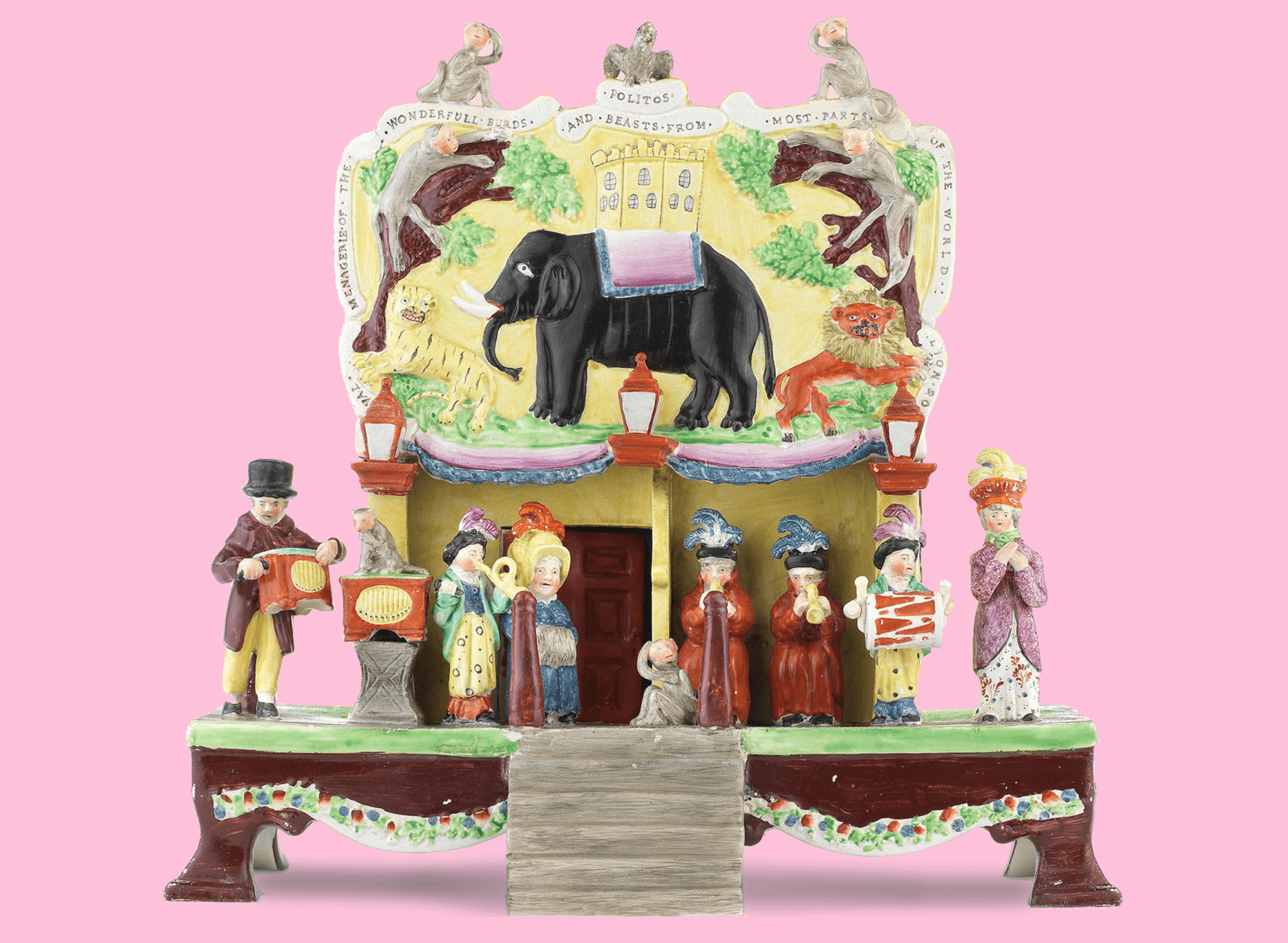The Legend of the Parson and his Clerk (circa 1820-30)
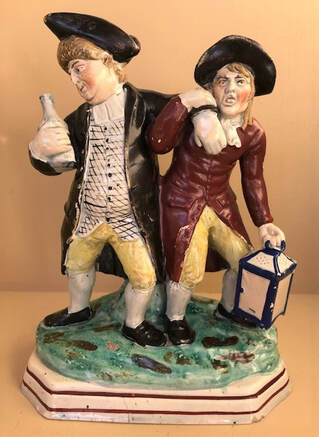
Many versions of this story exist but the most commonly told tale is that the Bishop of Exeter fell ill and came to Dawlish in the county of Devon to restore his health. However, an ambitious local parson aimed to succeed to the See (the bishop’s office) in the event of his superior’s demise.
The parson’s guide was his clerk and they often made the journey to check on the condition of the bishop. One night in a terrible storm, whilst crossing Haldon Moor they lost their way and found themselves miles from the correct path. The parson in his frustration abused his clerk with the words “I would rather have the devil himself, than you, for a guide.”
At that moment a horseman rode by and volunteered to be their guide.
After a few miles, they came across a brilliantly lit mansion and were invited by their guide to enter and partake of his hospitality. They enjoyed a sumptuous repast and in the midst of the merriment, the news arrived that the bishop was dead. Eager to secure his chance for promotion the parson prepared to leave, together with the clerk and the guide – but the horses refused to move. After liberal use of his whip and spurs the parson cried “Devil take the brutes!” upon which the guide exclaimed “Thank you, Sir!“ and shouted “Gee up!”. The horses galloped over the cliff, carrying the parson and the clerk with them. The devil turned them both to stone, facing forever seaward, monuments to greed and disappointed ambition.

More Figures of the month

Rare figure of Victorian card playing
At first glance, this may appear to be an ordinary arbour figure. But upon closer inspection, one can see these three people are engaged in a game of cards.
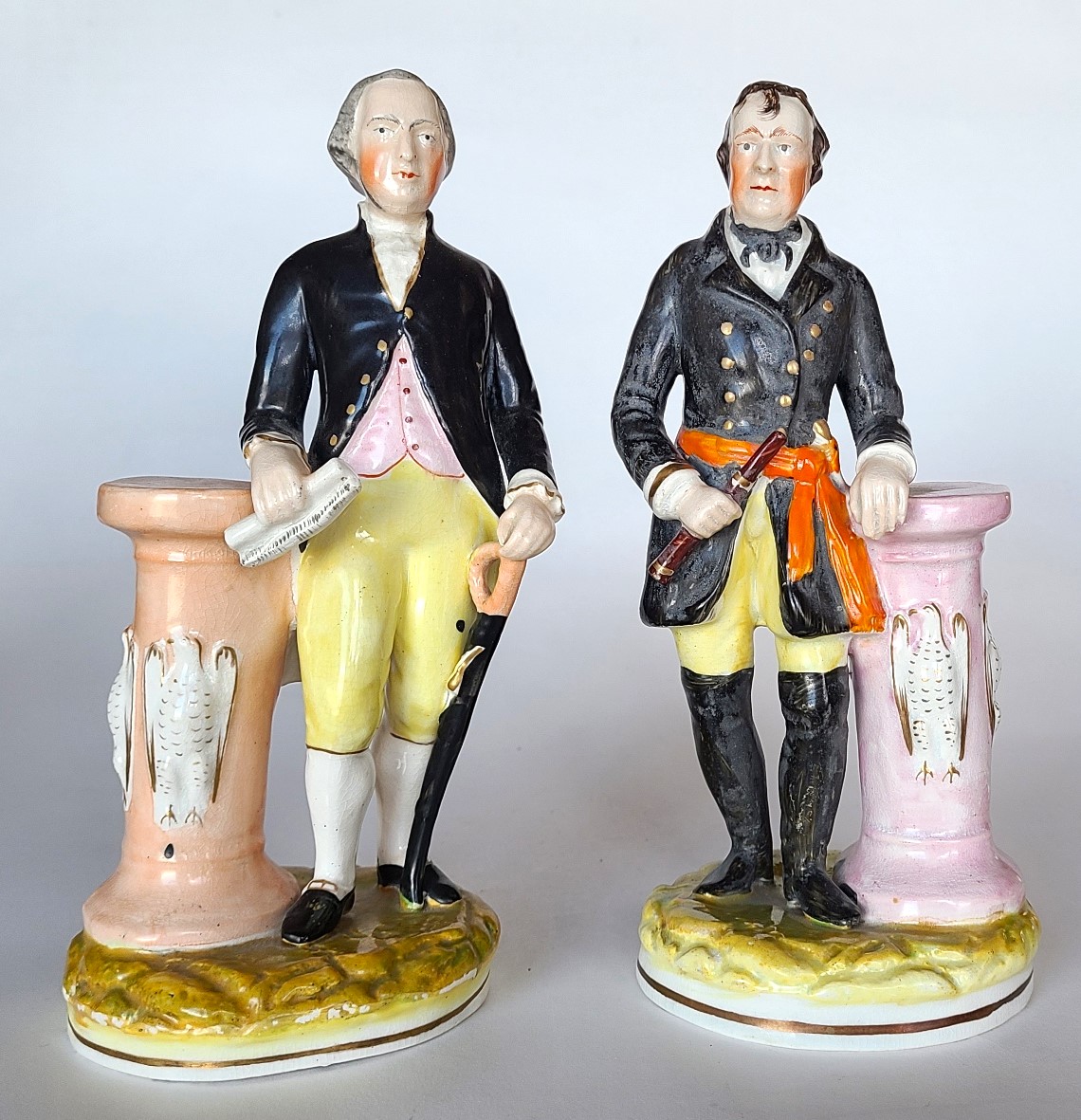
George Washington and Zachary Taylor
This is a very rare pair of figures portraying George Washington and Zachary Taylor. They stand approximately 9” and 9.1″ tall, and date to approximately 1850.
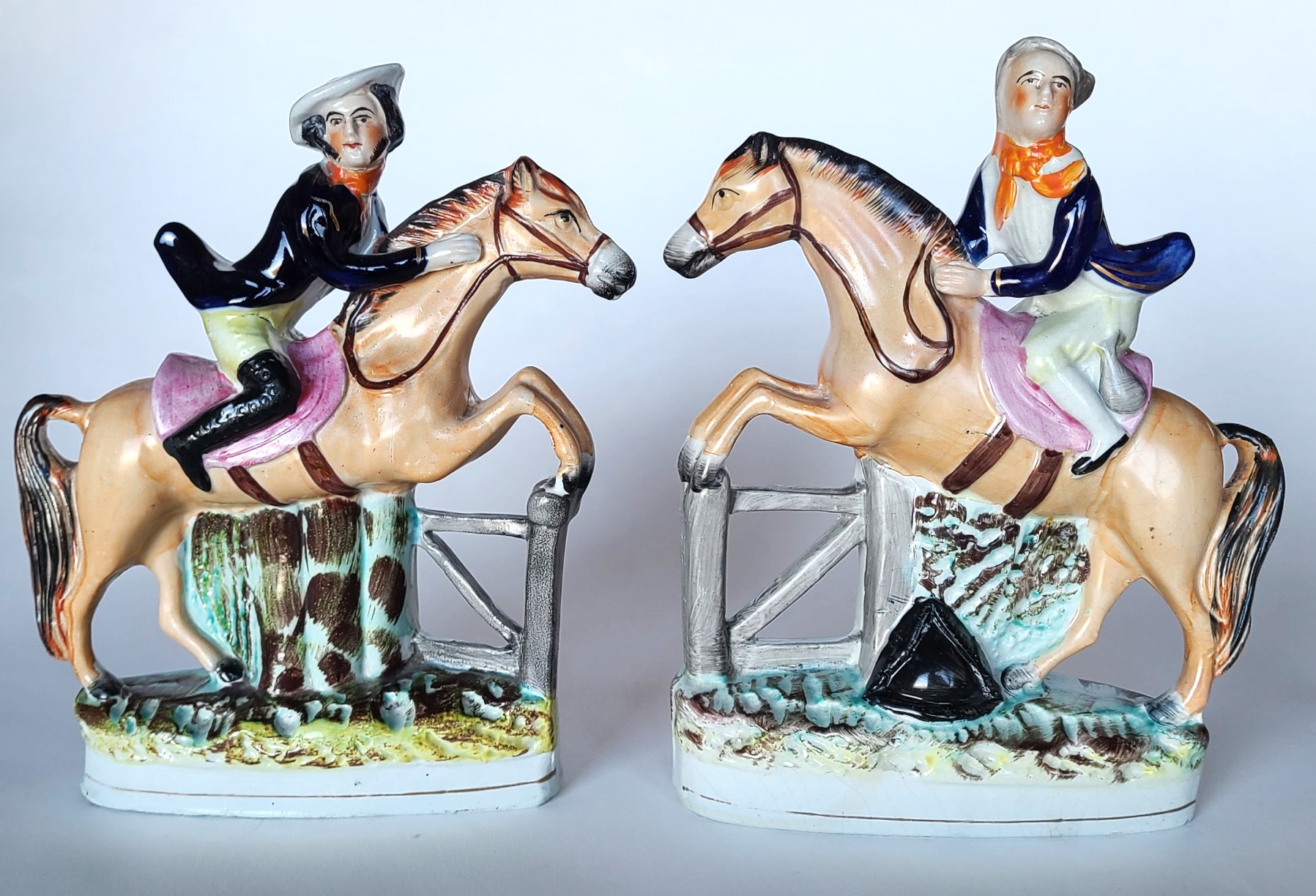
Tam O’Shanter and John Gilpin
This is a very rare pair of figures portraying Tam O’Shanter and John Gilpin. They stand approximately 8.6″ and 9.0″ tall, and date to approximately 1845.
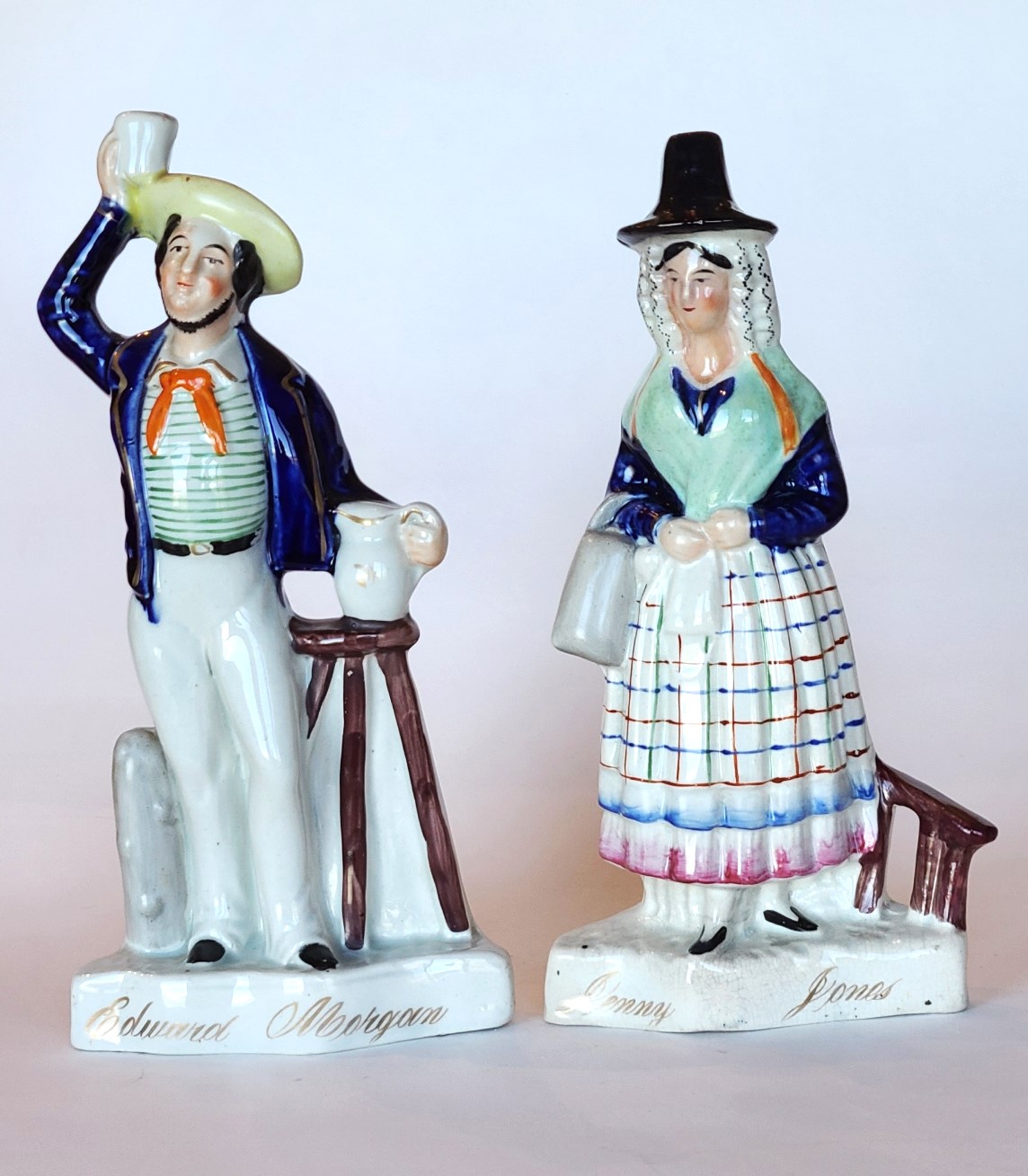
Edward Morgan and Jenny Jones
This is a rare pair of figures portraying Edward Morgan and Jenny Jones, titled with gilt script. The romantic tale of Morgan and Jones was set to music in 1825 by Charles James Mathews.
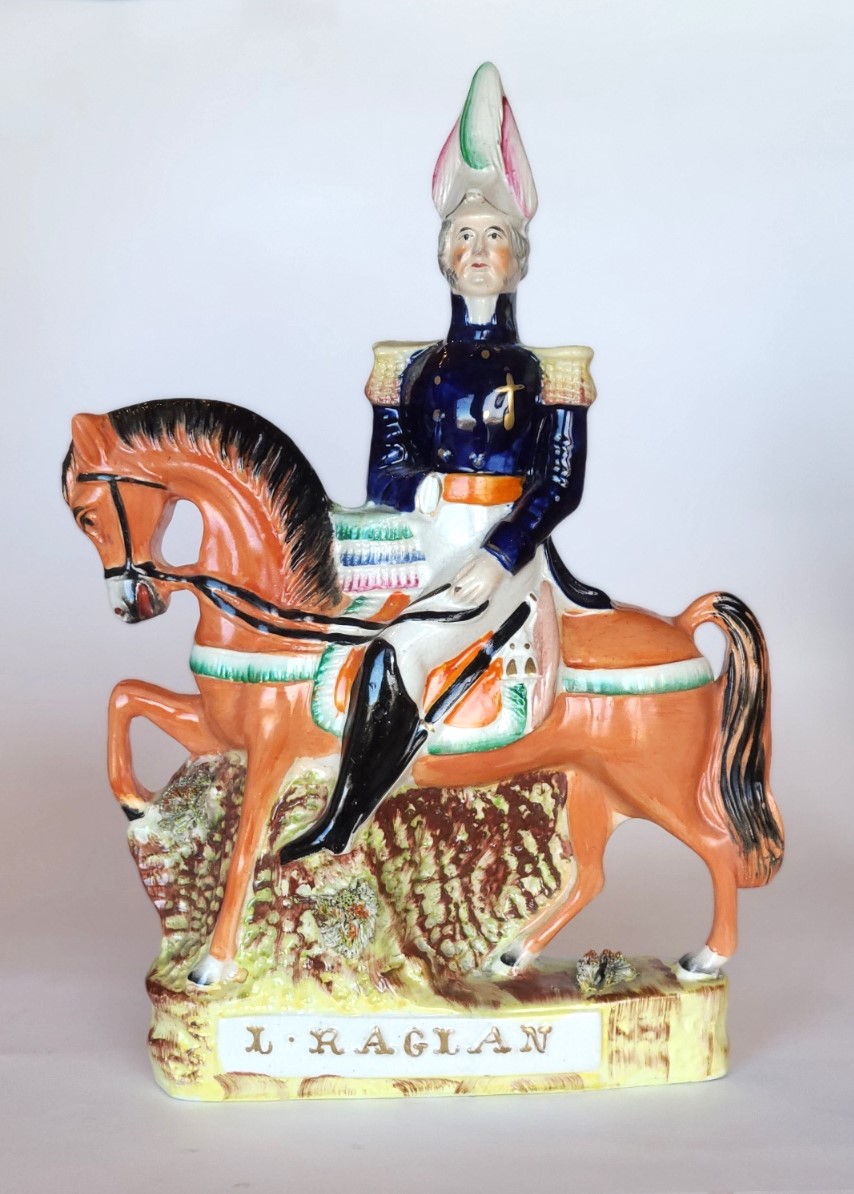
Field Marshal Fitzroy Raglan
This is a rare figure of Field Marshal Fitzroy Raglan. The figure stands about 12 1/4” tall and dates to about 1854.
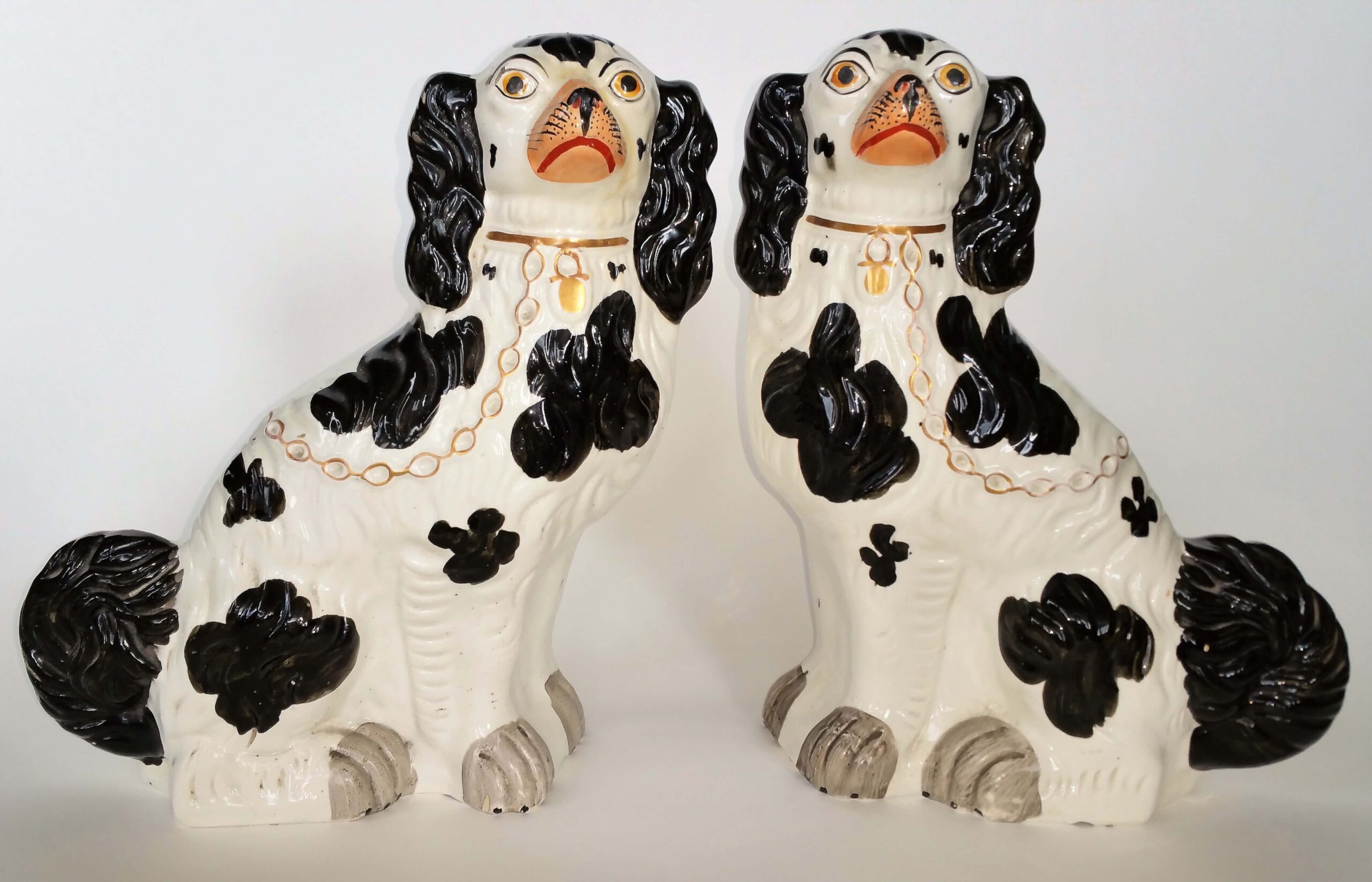
Black and white spaniels
This is fine pair of #1 black and white Staffordshire spaniels. They have a raised number one on the underside, designating them as the largest in a series of six sizes, number six being the smallest.
Membership
We warmly welcome new members – join us for free!
Wherever you are in the world, whether you are an experienced collector, a researcher interested in the folk art of England, or just someone who is intrigued by Staffordshire figures, please join us and get the rest of this year for free! Stay with us next year and pay an annual fee of £45 / $50 per household in January.
